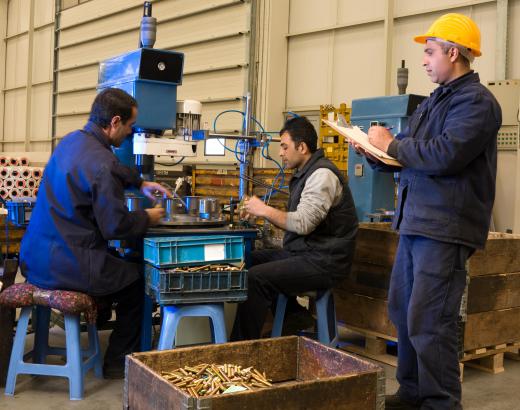Micro milling is a manufacturing process used for making very small parts, many of which can be hard to distinguish with the naked eye. To produce these minute components, companies rely on specialty milling machines, which operate similar to metalworking lathes on a smaller scale. Micro milling may be performed in machine shops, industrial plants, or manufacturing centers. While many home hobbyists use traditional metalworking lathes, few perform micro milling at home due to the high price tag associated with this equipment.
The micro milling process involves the very smallest parts and components used in modern manufacturing. These parts are so small, they are typically measured in microns rather than in feet or meters. As an example, a regular human hair measures around 50 microns in width. Micro milling often involves parts that measure even less than 50 microns, and many machines used in this process have a tolerance of plus or minus 2 microns. Some advanced equipment can even produce tolerances of less than 1 micron.

These small components play a vital role in many modern industries. Medical and electronics equipment often incorporate components that measure just a few microns. This allows companies to make this equipment even smaller and more lightweight over time. The same is true of military and aerospace applications, where micro milling and other advanced processes allow planes and satellites to travel further and perform complex tasks that would not be possible with larger equipment. The highly-precise nature of micro milling ensures small components will function as needed in many types of applications.
A micro milling machine often includes many of the same components found in a traditional factory, all condensed into a single tabletop device. An entire milling and assembly line process may take place in these machines, all without the need for human intervention. Lasers and other sensors are used to accurately measure components, while miniature spindles rotate each component. Small cutting tools and metal bits cut and shape the metal as it rotates, resulting in precise, fully-formed pieces.
The size of these machines can vary based on the type or volume of product being manufactured. The majority of these machines are operated via a separate control panel or monitor. Special software programs allow users to turn the milling machine on and off, and to specify the exact size and quantity of each component. Raw materials are fed into the machine, while finished products are packed and prepared for shipping.
